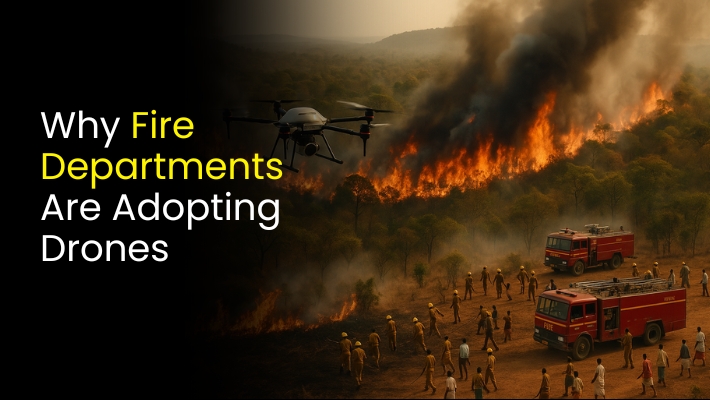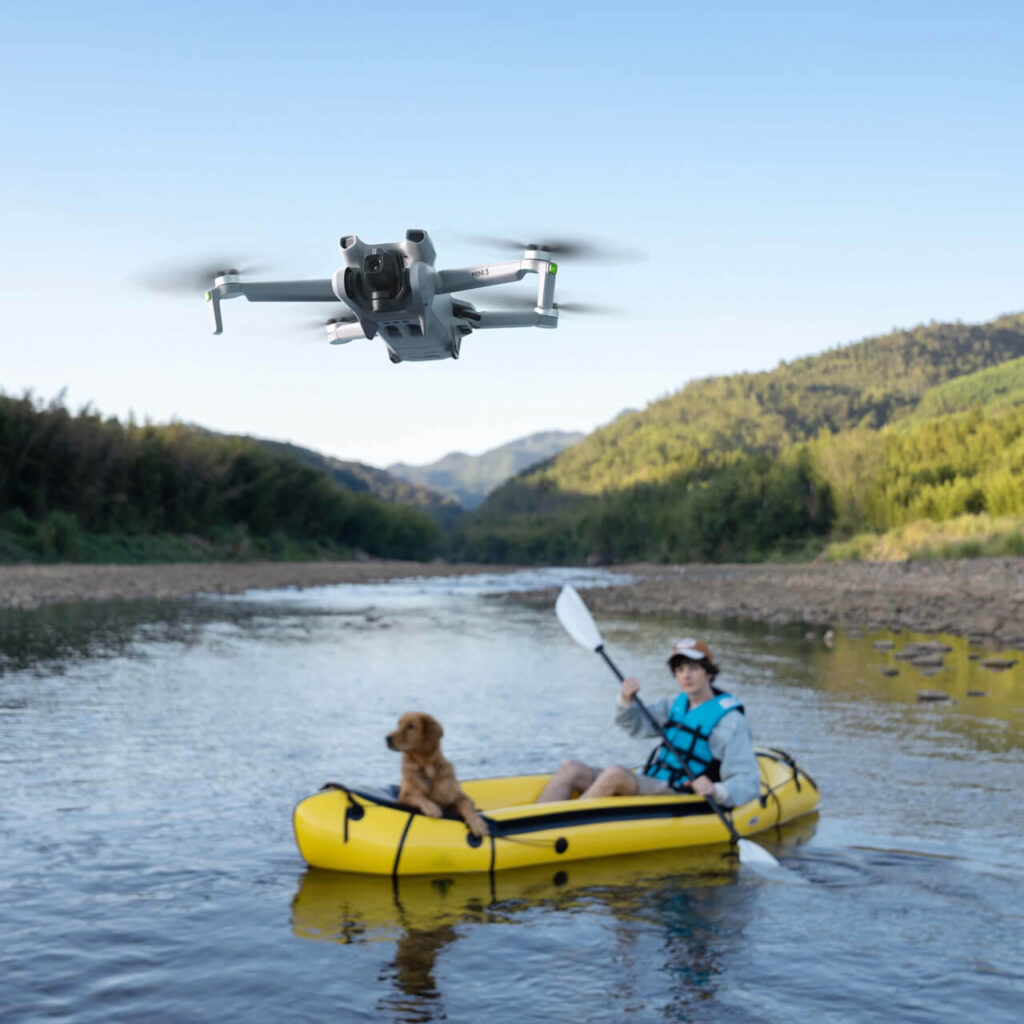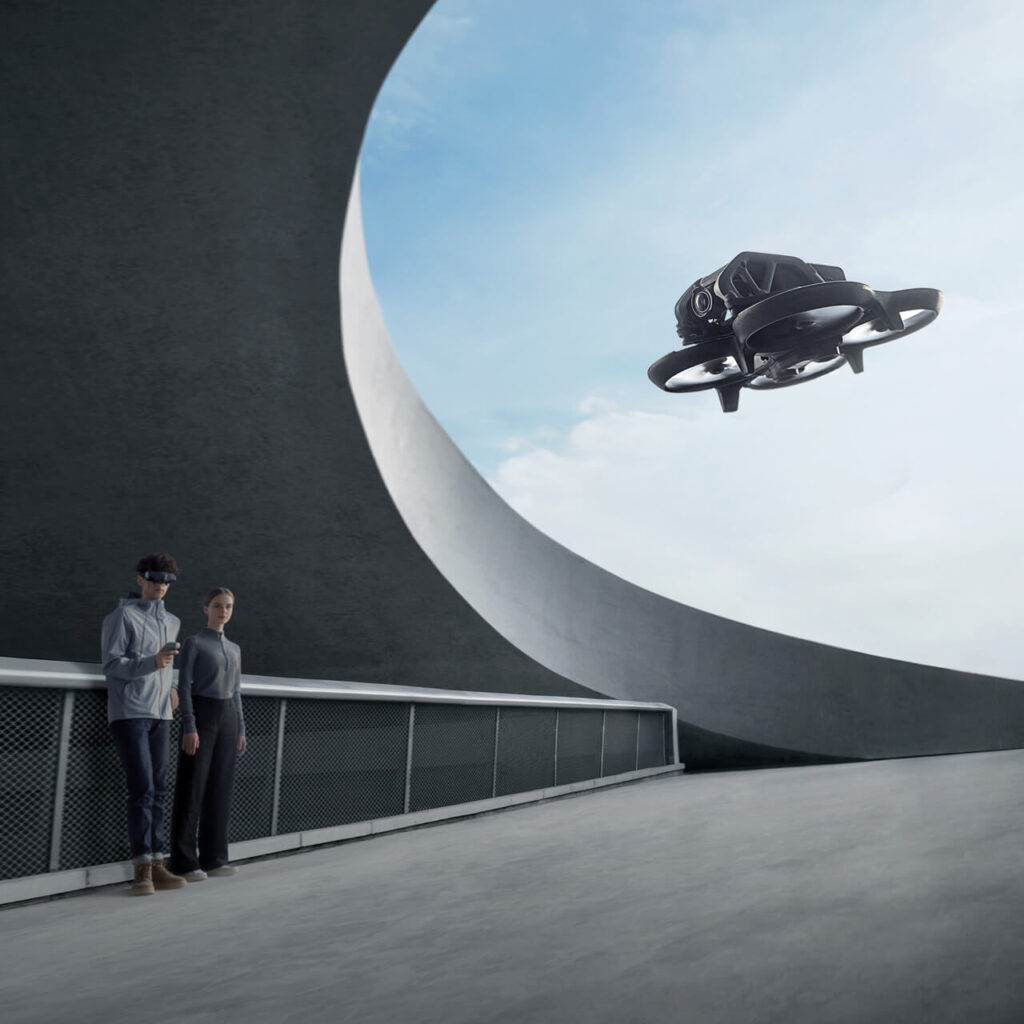Fires are unpredictable, fast-moving, and often dangerous even for the most experienced firefighters. When every second matters, having a clear view of the situation can make the difference between saving lives and losing them. This is why fire department drones are rapidly becoming a crucial part of modern firefighting.
Instead of relying only on ground teams or expensive helicopters, drones provide instant aerial insights, detect hidden hotspots, and even help locate people trapped in smoke-filled or collapsed buildings. They give incident commanders the information they need in real time, without putting firefighters at unnecessary risk.
In 2025, drones are no longer just experimental tools. They are now standard equipment for progressive fire departments across the world. And in India, trusted sellers like Jetayu Gadgets make it easier for departments to access advanced drone models from leading brands such as DJI, Autel, IdeaForge, Enzo, Parrot, and Skydio.
This blog explores the role of fire department drones in saving lives and fighting fires, their applications, benefits, challenges, and the top models available today.
Why Fire Departments Are Adopting Drones

Fire departments face one of the toughest challenges in emergency response: they must make life-saving decisions with limited time and incomplete information. Traditional tools like walkie-talkies, fire trucks, and even helicopters play their part, but they don’t always give incident commanders the real-time visibility they need. That gap is where drones have become indispensable.
1. Instant Aerial Awareness
When a fire breaks out in a multi-story building or spreads across forest land, drones can be deployed within minutes. Unlike helicopters, they don’t require extensive setup, making them the fastest way to get a clear picture of the situation. This advantage is especially important in countries like India where firefighting resources vary between regions.
In fact, the same consumer and enterprise drones that creators use—like the DJI Mini 4 Pro, recently compared in our blog DJI Mini 3 vs. Mini 4 Pro—Which Combo Is Right for You?—are now being adapted with thermal payloads for fire departments. The ability to switch between wide-angle views and zoom lenses helps firefighters analyze both large areas and specific hotspots.
2. Enhanced Safety for Firefighters
Walking blindly into a fire zone has always been risky. Drones, equipped with thermal cameras, detect hotspots and structural weaknesses before firefighters step in. This use of safety technology reflects the same principle discussed in our earlier blog Worried About Crashing Your First Drone? Here’s Why DJI’s Safety Features Have Your Back. For fire crews, the benefit is avoiding unnecessary exposure to collapsing roofs, spreading flames, or toxic gas leaks.
3. Smarter Resource Management
A single drone can do the work of multiple ground teams scouting different areas, saving time and manpower. This efficiency is similar to how drones in agriculture have helped reduce labor shortages, as explored in Can Drones Solve India’s Labour Crisis in Agriculture? Fire departments now see drones not just as surveillance tools but as multipliers of their existing strength.
4. Wider Role in Emergency Services
Drones are also proving useful beyond fires. Whether in floods, landslides, or missing-person searches, they cover ground that would take hours for teams to inspect. As we explained in Drones Could Be Heroes in the Northeast’s Flood and Landslide Crisis, drones bring life-saving speed to situations where traditional methods struggle.
5. Easy Accessibility Through Sellers
Another big reason fire departments are adopting drones is accessibility. They no longer need to depend only on specialized defense contractors. Sellers like Jetayu Gadgets provide access to a wide range of enterprise drones from trusted global brands—DJI, Autel, Skydio, Parrot, IdeaForge, and Enzo—so departments can choose the right mix of models for their needs. This also helps them stay compliant with aviation regulations, which we explained in Can I Fly My Drone Freely or Do I Need a License? Understand the Rules and Why Your Drone’s Weight Decides What Rules You Follow.
In short, fire departments are adopting drones because they deliver what no other tool can: fast aerial awareness, enhanced safety, and cost-effective efficiency, all while being accessible through trusted sellers in India.
Key Applications of Fire Department Drones
The real strength of drones in firefighting lies in how versatile they are. Modern fire departments use them in multiple ways, not only during active emergencies but also in training, prevention, and recovery. Let’s look at the most important applications.
1. Fire Monitoring and Assessment
When a blaze starts, getting a complete view is crucial. Drones can be launched within minutes to capture aerial footage of the fire’s size, spread, and risk areas. They help commanders identify safe entry points and evacuation routes. Unlike helicopters, they can fly lower and access tight urban zones.
2. Thermal Imaging and Hotspot Detection
Most professional fire drones are equipped with thermal cameras. These detect invisible heat signatures and reveal hidden fire pockets behind walls or under debris. For instance, compact drones like the DJI Mavic 3 Thermal, available via Jetayu Gadgets, are widely chosen because they combine portability with advanced thermal mapping. Thermal imaging is also a reason why industries like construction rely on drones, as covered in Why Builders Now Trust Drones More Than Ground Teams for Site Surveys.
3. Search and Rescue Operations
During building collapses, forest fires, or flood emergencies, drones can scan large areas much faster than human teams. Equipped with zoom and infrared sensors, they locate missing persons in smoke, darkness, or dense forest. This ability echoes what we explored in When Pets Go Missing, Drones Help Bring Them Home the same tracking capabilities are now saving human lives.
4. Hazardous Material Detection
Some fires involve dangerous chemicals or gases. Sending firefighters in without information can be fatal. Drones with multi-gas sensors or radiation detectors help identify toxic zones before anyone enters. This is a growing area where custom payloads are being used, similar to the way agricultural drones are adapted for different spraying needs, as seen in How Agriculture Drones Are Transforming Indian Farms.
5. Logistics and Supply Drops
In remote or high-risk zones, drones can carry lightweight supplies such as first-aid kits, radios, or ropes. While they can’t yet replace full trucks, they are vital in situations where time is short and access is blocked. In fact, this logistics role mirrors what we discussed in The Fastest Blood Delivery in the World? A Drone in the Sky, where drones proved essential for carrying critical medical payloads.
6. Post-Incident Analysis and Training
After the fire is out, drones continue to add value. High-resolution footage helps in damage assessment, insurance claims, and investigations. Departments also use this footage in training programs to prepare firefighters for future emergencies. The idea of using drones for documentation and creative storytelling is also popular among creators, as we explored in Is Buying a Drone Enough to Start My Journey as a Content Creator?. Fire services are now applying a similar approach but for operational learning and safety improvements.
Benefits of Using Drones in Firefighting
1. Improved Firefighter Safety
Drones reduce the need to send personnel blindly into burning or unstable structures. With aerial and thermal insights, commanders know where risks lie before committing a team.
2. Faster Decision-Making
Every minute counts during a fire. Drones provide real-time video feeds, helping command centers decide on evacuation routes, water supply points, and the safest entry paths almost instantly.
3. Cost-Effective Compared to Helicopters
Helicopters provide aerial views but come with massive operational costs. Drones deliver similar perspectives at a fraction of the expense, making them accessible even to smaller municipal fire stations.
4. Versatility Across Scenarios
From urban high-rises to remote forest fires, drones adapt easily. Their applications go beyond firefighting into search-and-rescue, hazardous material detection, and logistics support.
5. Detailed Documentation
High-resolution aerial footage is valuable for post-incident analysis, insurance claims, and training future firefighters.
Table: Traditional Methods vs. Fire Department Drones

Table: Benefits for Fire Departments and Communities

Top Fire Department Drone Models in 2025
Not every drone is built for firefighting. Fire departments need models that combine thermal imaging, long flight time, strong build quality, and real-time data transmission. Sellers like Jetayu Gadgets make it easier for departments in India to access these advanced drones from leading global brands such as DJI, Autel, Skydio, Parrot, IdeaForge, and Enzo.
Here are the most reliable models being used in 2025:
1. DJI Matrice 350 RTK
- Best for: Large-scale fire monitoring and mapping
- Key Features:
- 55 minutes max flight time
- Compatible with Zenmuse H20T thermal camera
- Night-vision and weather-resistant design
- Advanced obstacle avoidance
- Why Fire Departments Choose It: Provides detailed thermal + zoom imaging for large incidents like forest or industrial fires.
2. DJI Mavic 3 Thermal
- Best for: Compact operations in urban areas
- Key Features:
- Lightweight and portable
- 48 MP wide camera + thermal sensor
- 45 minutes flight time
- Affordable entry option for departments
- Connection to Past Blogs: Similar to the creator-focused models we covered in Buying a Drone for the First Time? The DJI Mini 4 Pro Makes It Easy to Fall in Love with Flying, but engineered for emergency services.
3. Autel EVO II Dual 640T V3
- Best for: Quick-response teams needing thermal + 8K video
- Key Features:
- Dual camera system (8K + thermal)
- 40 minutes flight time
- Foldable design, easy to carry
- Why It Stands Out: Strong balance of portability and professional-grade sensors.
4. Skydio X10
- Best for: Autonomous flight in obstacle-heavy environments
- Key Features:
- AI-powered autonomous navigation
- Thermal and zoom payloads
- Excellent in tight urban spaces
- Why Firefighters Like It: Can fly safely even with heavy smoke or obstacles where manual control is challenging.
5. Parrot Anafi USA
- Best for: Departments needing a cost-effective American-made option
- Key Features:
- 32x zoom + thermal imaging
- Lightweight, deployable in under 55 seconds
- AES-256 encryption for secure data
- Use Case: Ideal for smaller departments or quick inspections.
6. IdeaForge NINJA UAV
- Best for: Rugged use in Indian terrains
- Key Features:
- Designed for endurance and reliability
- Strong weather resistance
- Supports multiple payloads including thermal
- Why It Fits India: Built by an Indian brand, adapted to local climate and field conditions.
7. Enzo FireEye (Specialized Model)
- Best for: Hazardous material detection and industrial fire sites
- Key Features:
- Custom payloads for gas and chemical detection
- Thermal + high-res cameras
- Extended flight time
- Why It’s Unique: Focuses on industrial safety missions, complementing standard firefighting tasks.
Comparison Table: Fire Department Drone Models
| Drone Model | Flight Time | Camera Payload | Best Use Case | Availability via Jetayu Gadgets |
|---|---|---|---|---|
| DJI Matrice 350 RTK | 55 min | Thermal + Zoom | Large-scale wildfires, mapping | Yes |
| DJI Mavic 3 Thermal | 45 min | Wide + Thermal | Urban firefighting, compact missions | Yes |
| Autel EVO II Dual | 40 min | 8K + Thermal | Rapid response, portable operations | Yes |
| Skydio X10 | 40+ min | Thermal + Zoom | Autonomous navigation in obstacles | Yes |
| Parrot Anafi USA | 32 min | 32x Zoom + Thermal | Small departments, quick deployment | Yes |
| IdeaForge NINJA UAV | 40+ min | Thermal + Custom | Indian terrains, rugged environments | Yes |
| Enzo FireEye | 45 min | Gas detection + Thermal | Industrial fire and hazmat sites | Yes |
How Fire Department Drones Save Precious Time
In firefighting, every second matters. Traditionally, crews relied only on ground assessment, which often delayed critical decisions. Fire department drones, like those available at Jetayu Gadgets, speed up the process by providing instant aerial views and heat detection.
Key Benefits of Using Fire Department Drones
Here’s a quick breakdown of how drones are changing fire response:
| Feature | Traditional Method | With Fire Department Drones |
|---|---|---|
| Scene Assessment | Firefighters climb ladders or wait for reports | Instant aerial footage from above |
| Rescue Operations | Limited view of trapped people | Thermal cameras spot heat signatures |
| Fire Mapping | Requires manual checks | Real-time 3D mapping of the fire spread |
| Safety for Firefighters | Higher risk due to blind spots | Reduced exposure with drone surveillance |
| Resource Deployment | Based on estimation | Data-backed precision deployment |
By reducing guesswork, drones help teams act faster, safer, and smarter.
Key Features That Make Fire Department Drones Effective
To understand why fire services worldwide, including those equipped by Jetayu Gadgets, are adopting drones at such a fast pace, let’s break down their features.
| Feature | How It Helps Firefighters |
|---|---|
| Thermal Imaging Cameras | Detects hotspots and victims through smoke, darkness, or debris. |
| Real-Time Video Feed | Sends live aerial footage to command centers for better decision-making. |
| Long Flight Time | Allows extended monitoring of large-scale fires without frequent battery changes. |
| Payload Capacity | Carries fire-retardant balls, communication devices, or emergency medical kits. |
| Autonomous Flight Modes | Enables pre-programmed patrols of high-risk areas, reducing manual effort. |
| Night Vision Capability | Ensures visibility in low-light or nighttime rescue missions. |
| Weather Resistance | Operates safely in rain, wind, and high-temperature zones near active fire sites. |
Conclusion
Fire department drones are no longer optional tools; they are lifesaving assets. From detecting hidden fire pockets to locating victims in smoke-filled areas, these drones provide firefighters with a clear advantage. Companies like Jetayu Gadgets are making this technology accessible to fire departments across India, ensuring quicker response times and safer operations.
By adopting drone technology, fire departments can save more lives, reduce property loss, and enhance firefighter safety. As the future of emergency response evolves, drones will continue to play a central role in protecting communities.
Frequently Asked Questions
1. How do fire department drones work during a fire?
They use thermal imaging cameras and high-resolution sensors to detect hotspots, track fire spread, and locate victims.
2. Are drones replacing firefighters?
No. Drones are support tools. They provide real-time data that helps firefighters make faster and safer decisions.
3. What types of drones are used by fire departments?
Models like DJI Matrice, Mavic 3 Enterprise, and Autel EVO II Dual are common. Companies like Jetayu Gadgets provide tailored drone solutions for firefighting teams.
4. Can drones operate in smoke or high-heat conditions?
Yes, advanced drones with thermal imaging and strong flight stability can operate in smoke, but extreme heat may still limit performance.
5. Do fire departments in India already use drones?
Yes, many state fire services and disaster response teams in India have started adopting drones for rescue and firefighting missions.



